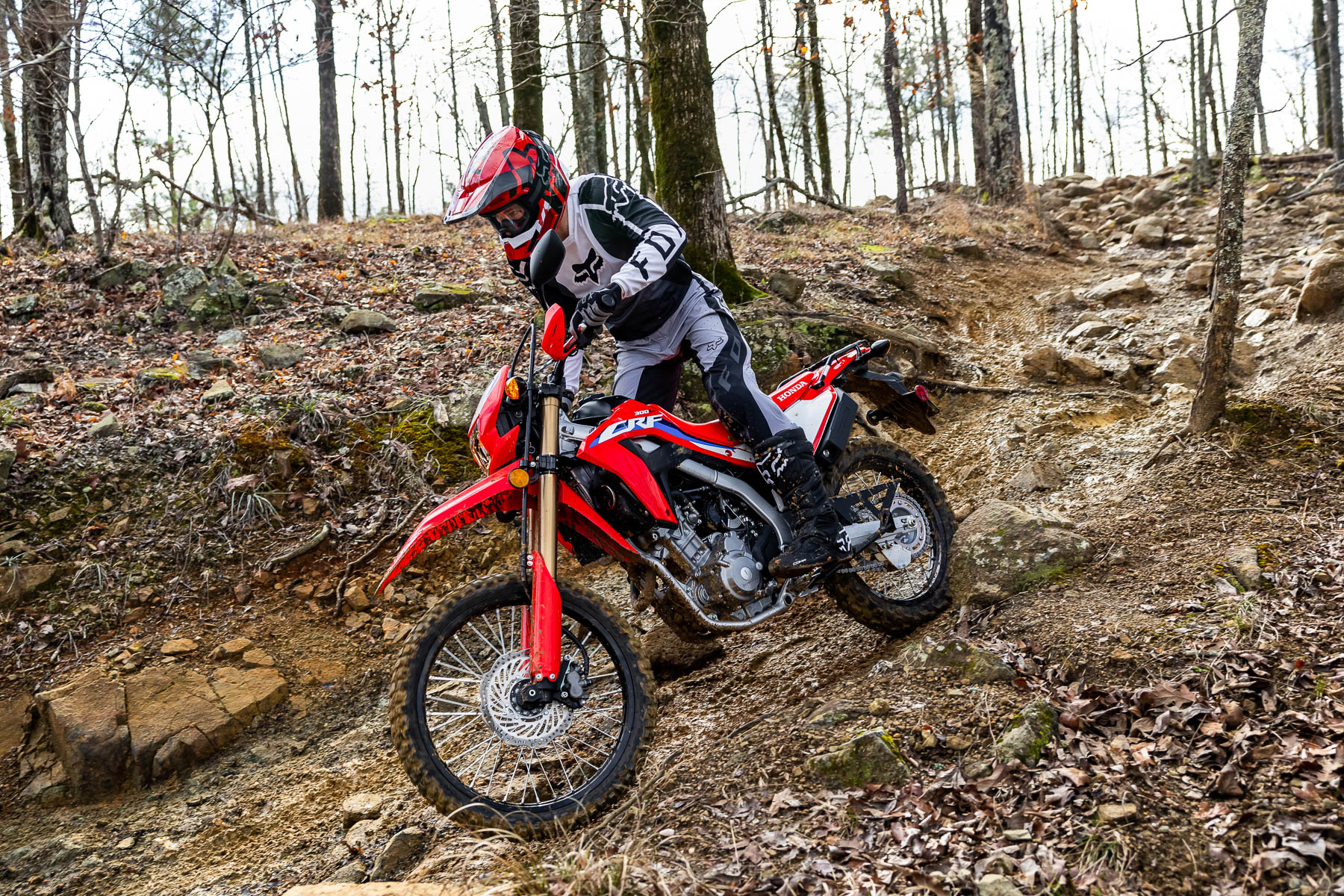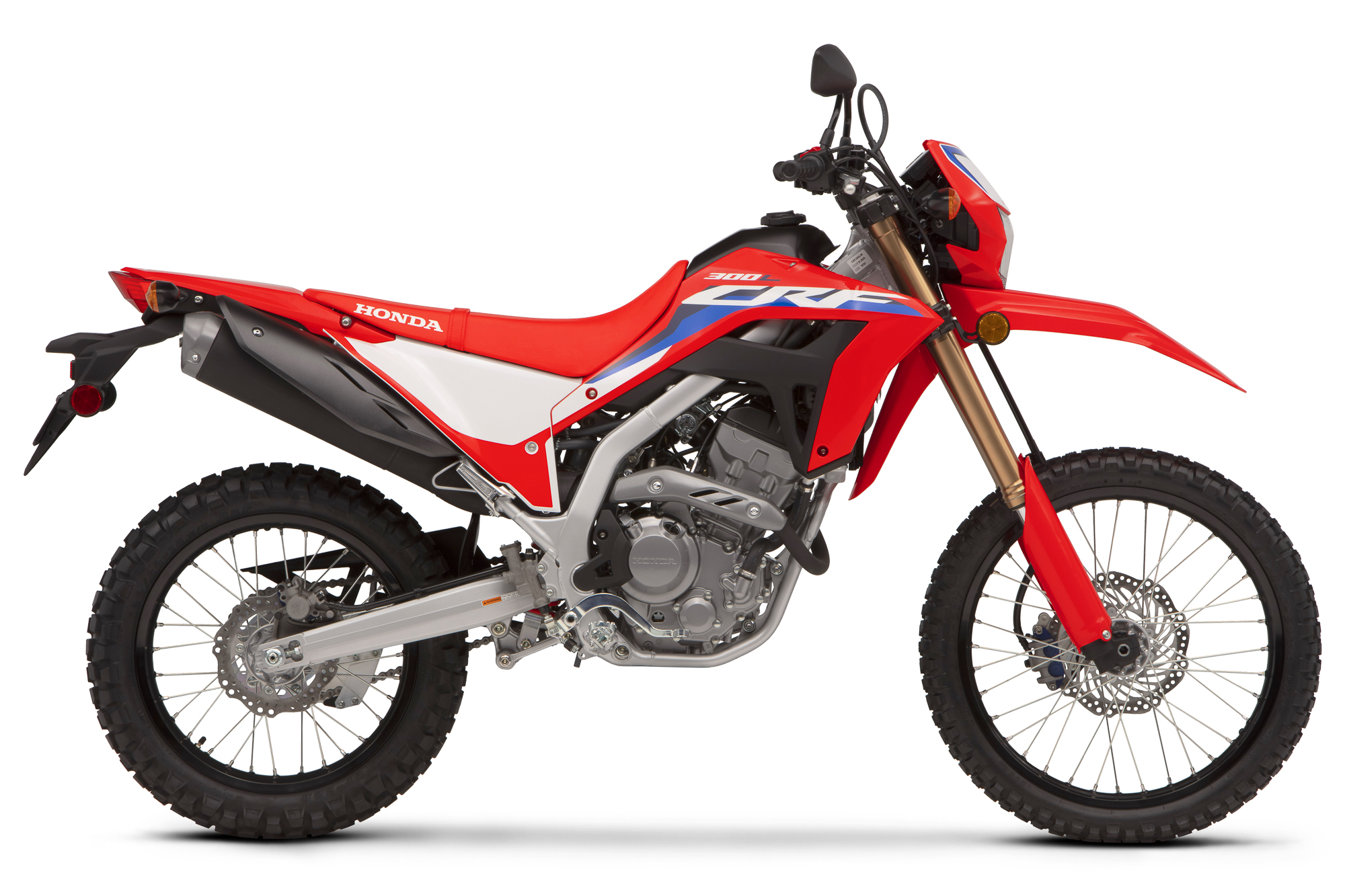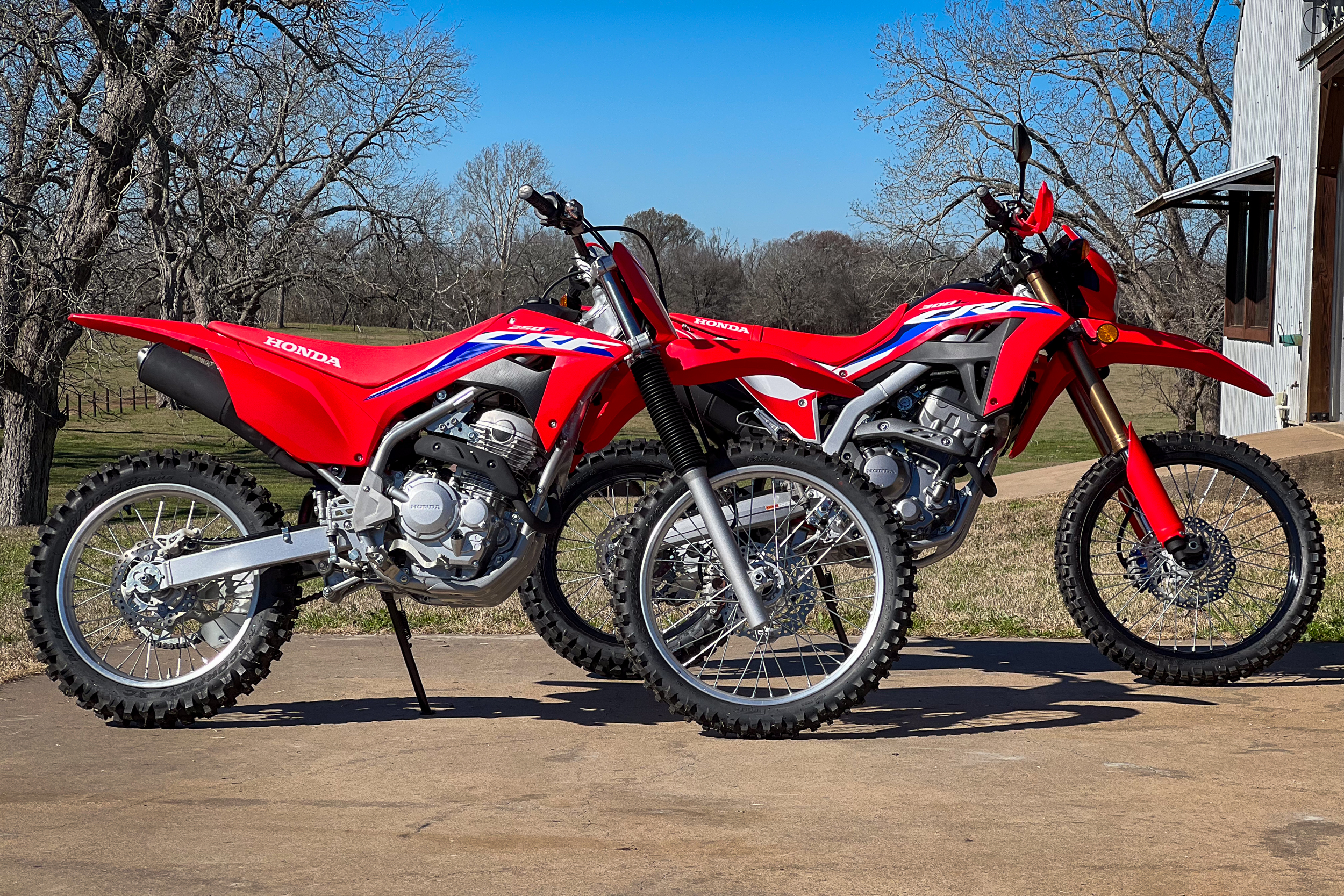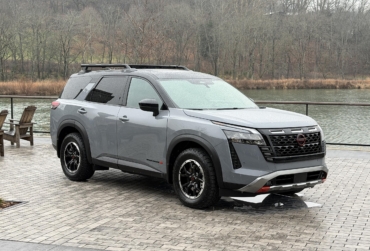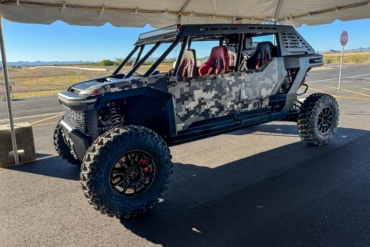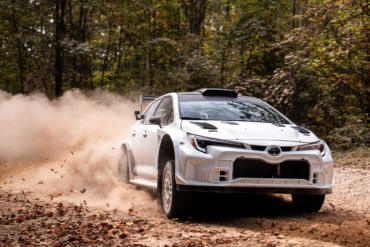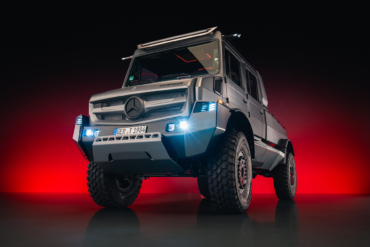Honda’s dual-sport lineup of CRF and XR models represents some of the most utilitarian and affordable motorcycles ever sold. All but one of the bikes cost under $7,000. They can all scoot around urban centers, cruise highways, and provide recreational dirt riding. Honda’s reliability is also a key selling point.
The 2024 CRF300L is in the sweet spot of Honda’s dual-sport selections. The 286cc single-cylinder water-cooled engine gives it more power than the XR150L. But it has less oomph than the CRF450L or the Baja classic XR650L.
It also straddles the middle of the lineup regarding weight and size. And quite amazingly, it has an affordable base MSRP of $5,449 (plus a $600 destination charge).
I’ve been testing the 2024 Honda CRF300L since the beginning of the year. I commuted from my home in Wimberley, Texas, on rough dirt and gravel roads, to Austin via windy country blacktop and smooth, wide-open highways.
I rode it on singletrack trails, through sandy and rocky riverbeds, and across flat pastureland. And I cruised it from one small town to the next on poorly maintained chip seal farm-to-market roads.
In short: The 2024 Honda CFR300L is an amazingly capable motorcycle on all the terrain that many people would ever ride for both utilitarian duties and recreational jaunts. It isn’t a top performer in any category, but it is usefully adequate and plenty of fun. The motorcycle would be an ideal entryway into dual-sport riding, with its affordable price tag, extremely easy-to-ride nature, and Honda reliability.
- Engine: 286cc, liquid-cooled 4-stroke
- Valve train: DOHC, 4 valves
- Compression ratio: 10.7:1
- Induction: PGM-FI, 38mm throttle body
- Transmission: 6-speed manual
- Fork: 43mm inverted fork; 10.2-inch travel
- Shock: Pro-Link single shock; 10.2-inch travel
- Front brake: Single 256mm disc with twin-piston caliper
- Rear brake: Single 220mm disc
Pros
- Easy to ride, almost impossible to stall
- Linear, predictable power delivery
- Can lug a taller gear at low rpm
- Low seat height
- Great bang for the buck
Cons
- Suspension limiting for intermediate and advanced off-road riders
Main Specifications and Features
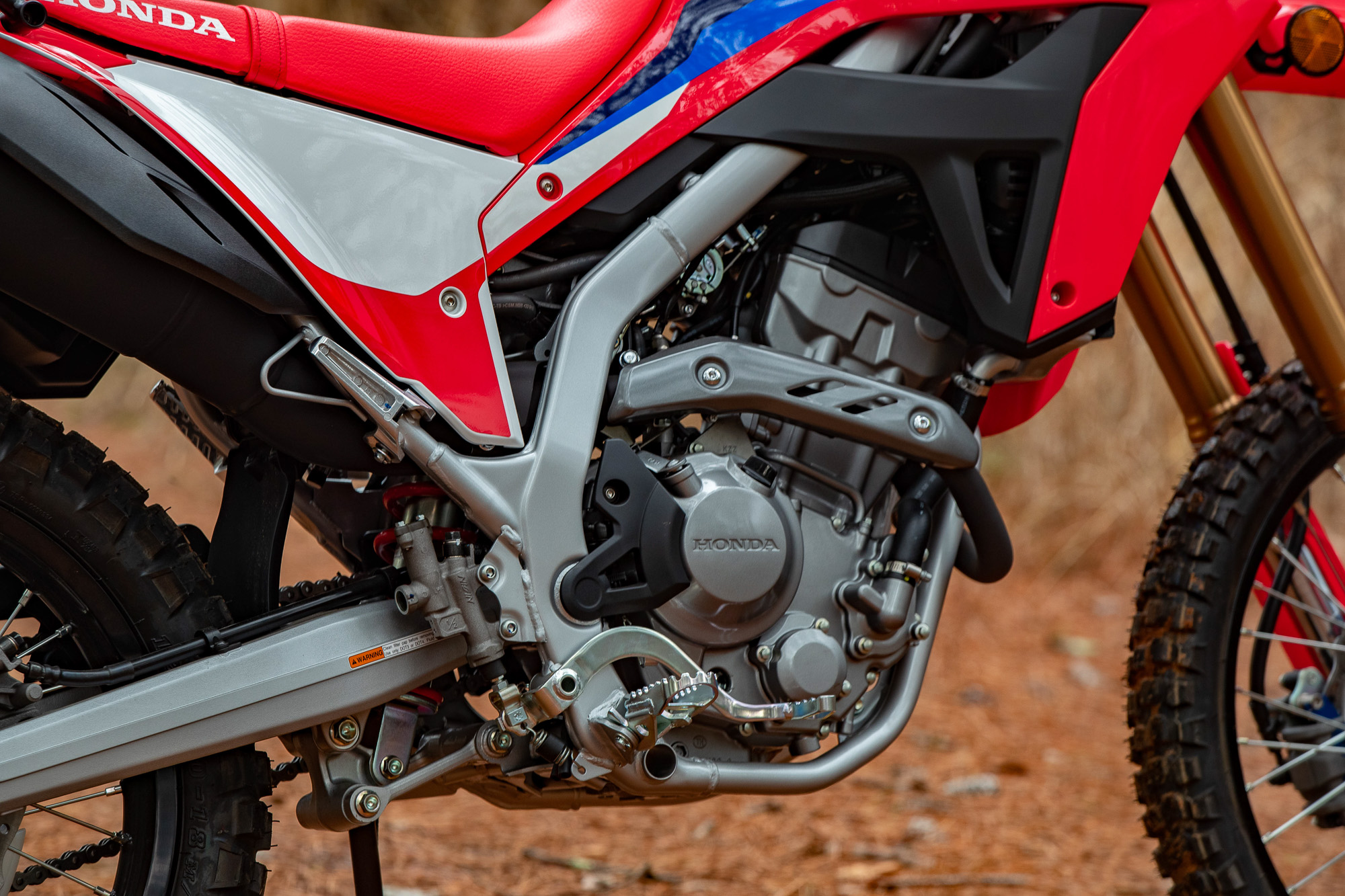
Dual-sport motorcycles have to straddle disparate needs; powertrain, suspension, and chassis geometry requirements are so different between dirt and street. Honda builds the CRF300L to best address this split, and the result fits beginner riders well.
The 286cc liquid-cooled, single-cylinder, fuel-injected four-stroke engine channels power delivery through a six-speed manual gearbox and a 14T/40T final chain drive.
Showa handles front suspension duties with a 43mm inverted, non-adjustable fork. Honda articulates the rear swingarm through its proven and long-standing Pro-Link system and Showa shock with preload adjustment. In tandem, these deliver 10.2 inches of travel at both ends of the bike.
The CRF300L’s seat height is 34.7 inches, and the ground clearance is 11.2 inches. The wheelbase is 57.2 inches, and the listed curb weight is 306 pounds.
A twin-piston caliper clamps a single 256mm disc up front, and a single-piston caliper mates with a single 220mm disc at the rear to handle braking duties. ABS is optional.
A 2.1-gallon gas tank with a 0.5-gallon reserve feeds the red (the only available color) machine. The bodywork mimics Honda motocross machines, and handguards are included. Black rims are mated to IRC GP series tires, with an 18-inch in the rear and a 21-inch in the front.
Honda applies a 1-year, transferrable factory warranty to its CRF300L with the option to extend it.
The Honda CRF300L on the Streets
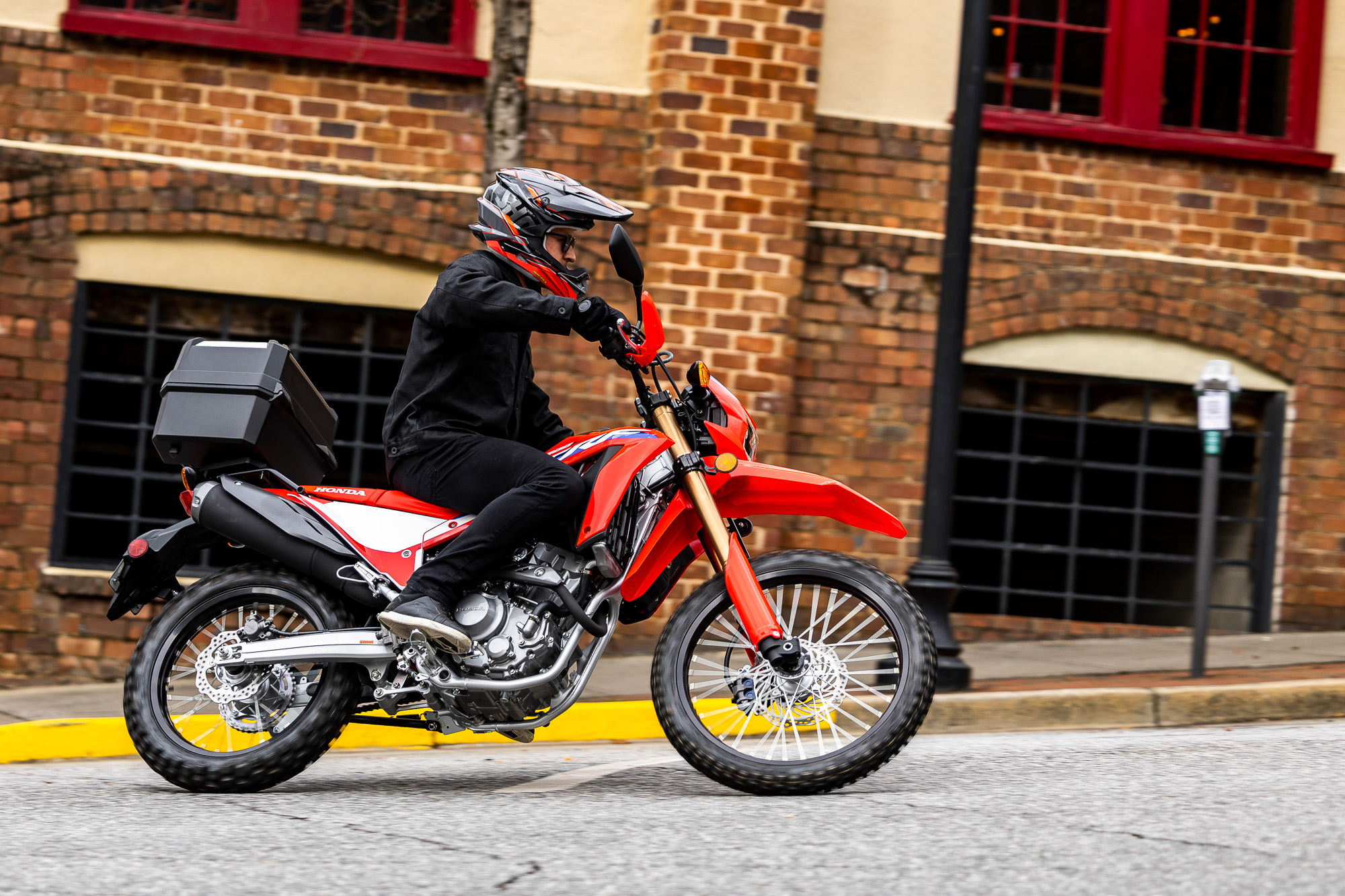
Most people ride dual-sport motorcycles primarily on the street, and the little red bike proved capable and practical in urban environments.
Commuting in Town
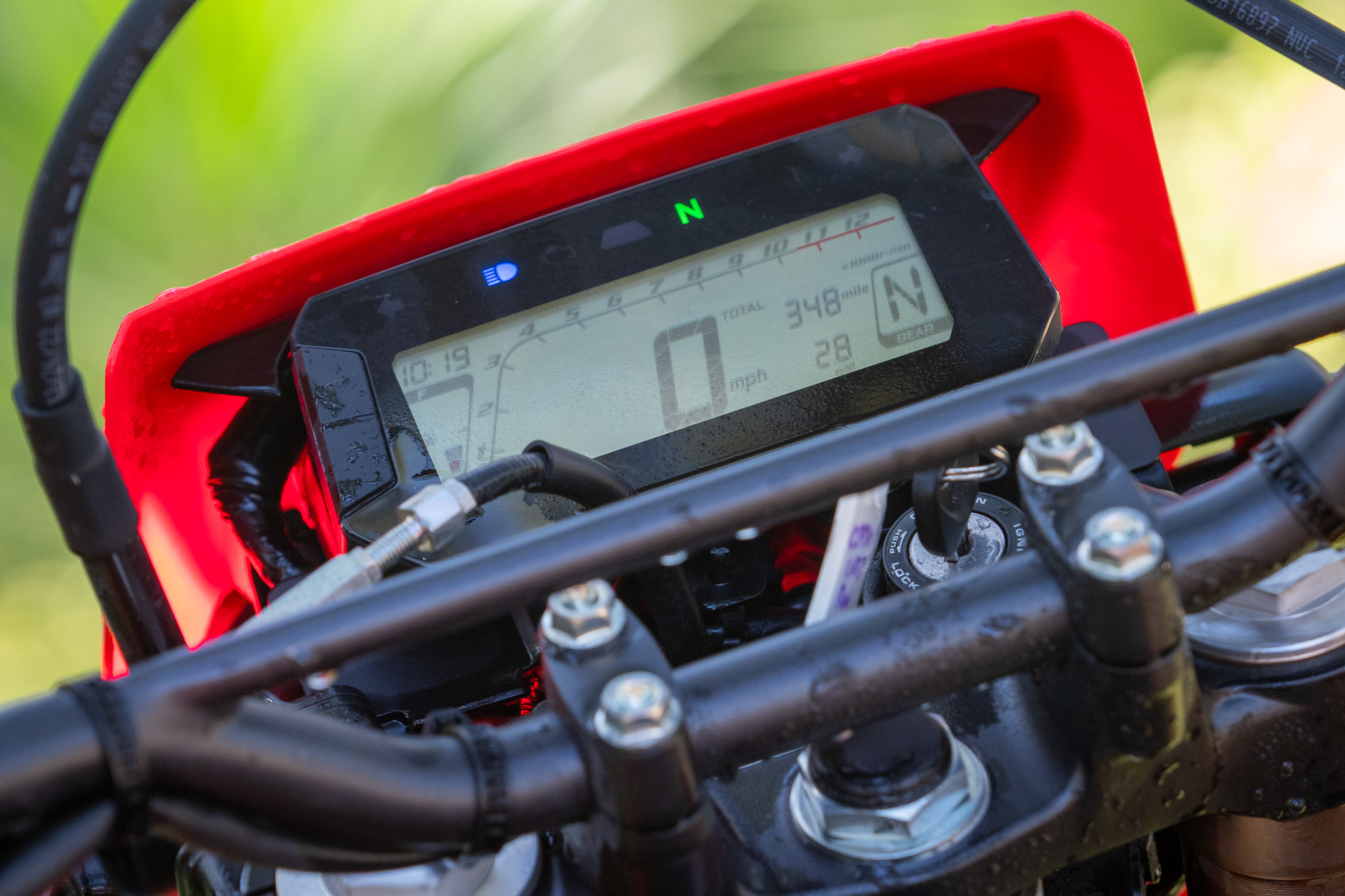
The CRF300L was mild-mannered on the streets but delivered enough power and acceleration for confident and fun urban scooting. Zipping around my small town to fetch groceries and run other errands was stress-free.
The motor built revs predictably without any steep jumps in power. And the low seat height (for me) made it easy to manage stop-and-go traffic. The engine happily chugs within each gear to around 3,000 rpm. Then, a torque drop to 5,000 rpm was apparent, where it picked up again.
The backlit LCD display includes an easy-to-read digital rpm gauge, complete with an upshift indicator. I thought these were great additions for beginners to learn the feel of when to shift and the relationship between rpm and power for this particular bike.
On the Freeway
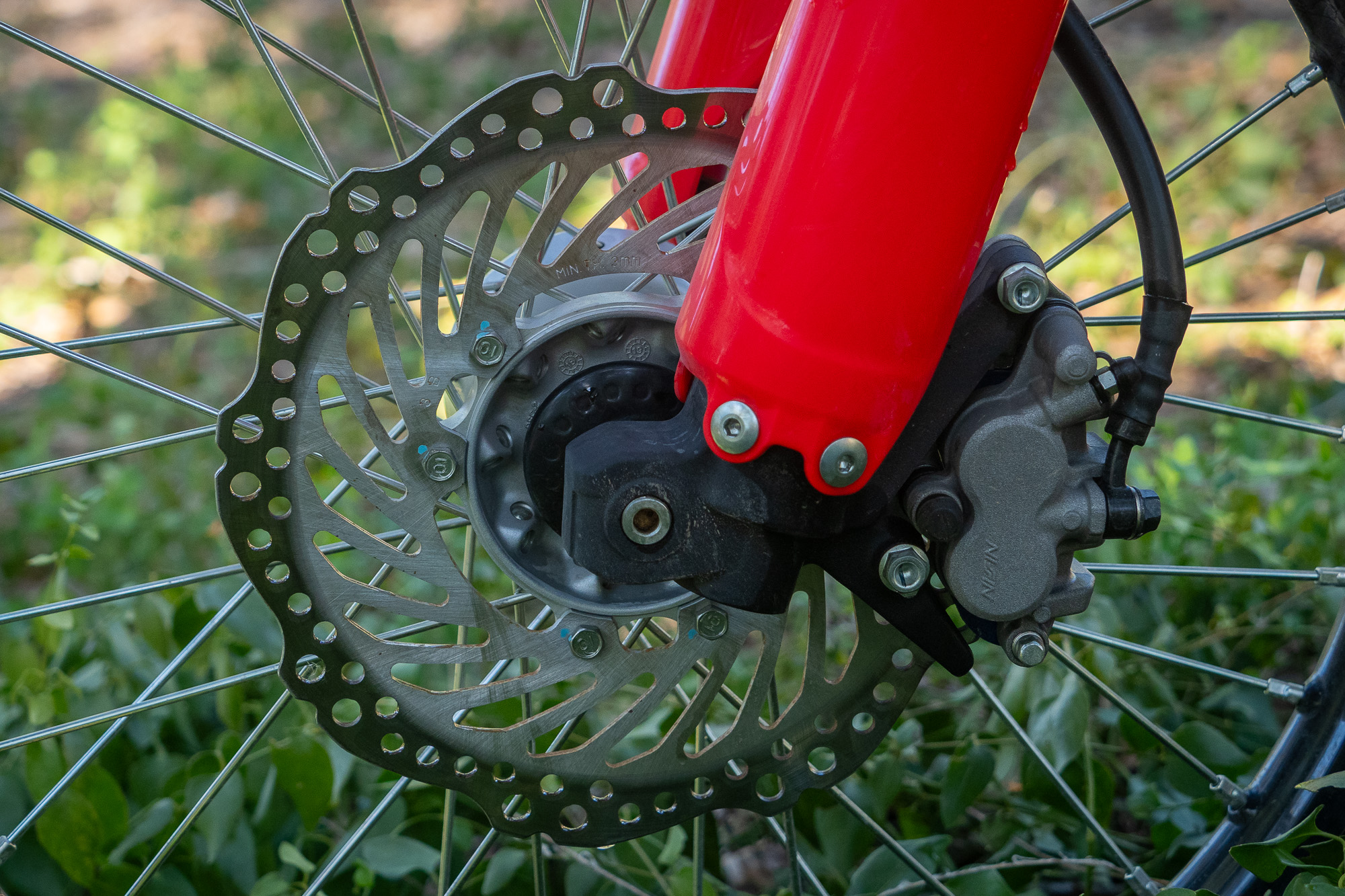
I was a bit worried about Honda’s freeway manners. For a single-cylinder, small displacement bike running semi-knobby tires, the CRF300L was surprisingly low on rumble factor. To my surprise, the CRF300L felt smooth at highway speeds up to 75mph.
The acceleration was nowhere near what larger twin-cylinder adventure bikes can do, but for the price, it felt adequate. I just gave myself plenty of cushion when planning passes, and all went well.
The six-speed transmission was easy to manipulate. I hit a false neutral a handful of times until I got used to the pressure needed to engage a shift, but otherwise, there was nothing to notice.
I don’t worry too much about how a dual-sport bike handles on the street. As long as it’s predictable and manageable without any extra input or significant corrective measures, it’s fine with me. I place much more weight on how dual-sport motorcycles handle the dirt. The Honda fit this bill.
It didn’t strike me as short on the roads for a dual-sporter. It did what I thought it would do, how I thought it would do it. Nothing stood out in any direction. It didn’t take any conscious thought from me to ride it safely and effectively on the pavement.
2024 Honda CRF300L Dirt Manners
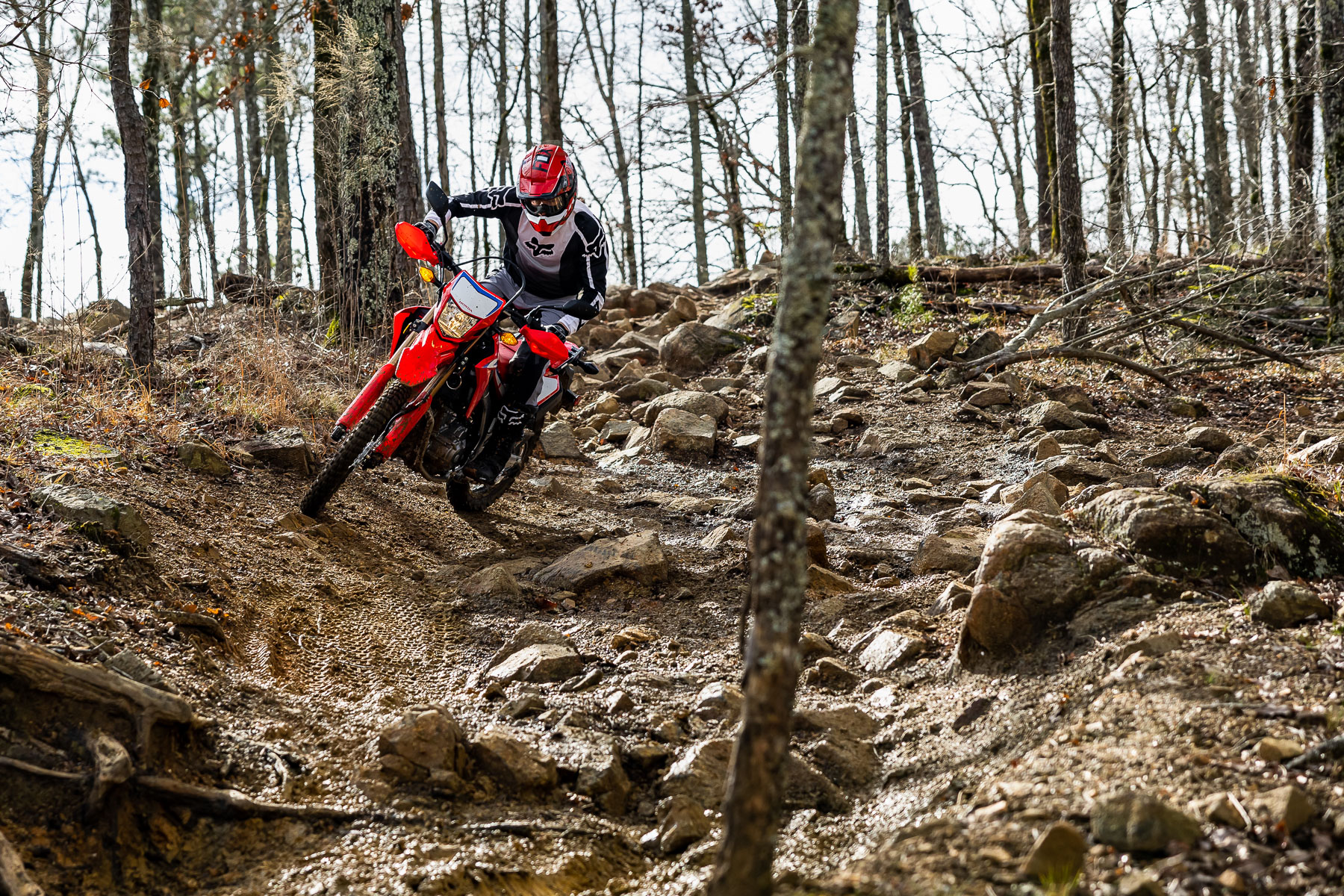
The dirt is where the fun really began for me on the Honda CRF300L. The motor’s easily manageable characteristics suited a beginner dirt rider well. It delivered power in a very linear, predictable way — no surprises.
The linear power delivery meant I could stay in a gear longer when required without a sudden jump in power at the rear tire. I felt this characteristic alone would aid a rider new to trails significantly. There was no hurried downshift entering the turn with an equally hurried upshift while exiting. A beginner could just focus on making the turn, staying in the same gear, and upshifting when the bike was upright.
As a more advanced rider, dialing up the excitement was a matter of aggressive throttle and clutch use. No, this is not a $10,000+ large displacement dual sport bike or a motocross bike. But I had plenty of fun riding the Honda CRF300L and never felt apprehensive. I was pleasantly surprised at how entertaining it was to wring the most out of the amazingly practical bike on trails.
Speaking of the clutch, the cable-actuated, slip-assisted unit required low lever pressure to disengage, which also suited new riders well. It didn’t have an abrupt or narrow engagement zone. Combined with the engine manners, it added to the relaxed overall nature of the CRF300L. And the bike was just about impossible to stall, which bodes well for true beginners.
At higher trail riding speeds on smoother dirt roads, the motor felt great. In the low to mid rpms in fourth gear, the engine felt in its stride. It responded smoothly to throttle inputs and felt freer than it did going slower on tight trails. These were the moments when I forgot I was on a dual-sport motorcycle that costs less than any mountain bike I’m testing.
Suspension Action on the Trails

The suspension, which was adequate for my 164-pound frame on the street, showed some deficiencies in the dirt, even when riding tamely. Although the supple fork felt fine on smoother, slower trails, any reasonably significant obstacle or a touch of speed caused frequent bottoming. The shock was more resistant but followed suit as the obstacles grew larger and the speeds increased.
For a budget dual-sport bike, I felt the little Honda’s suspension did what it was supposed to do in the dirt. On tamer single-track and dual-track dirt roads, the bike responded well and was within its capabilities. But throw in any rocks, deep sand, whoops, or anything else in the “intermediate” range, and the suspension held me back. However, lighter riders may find the settings a perfect balance between comfort on the roads and performance on dirt.
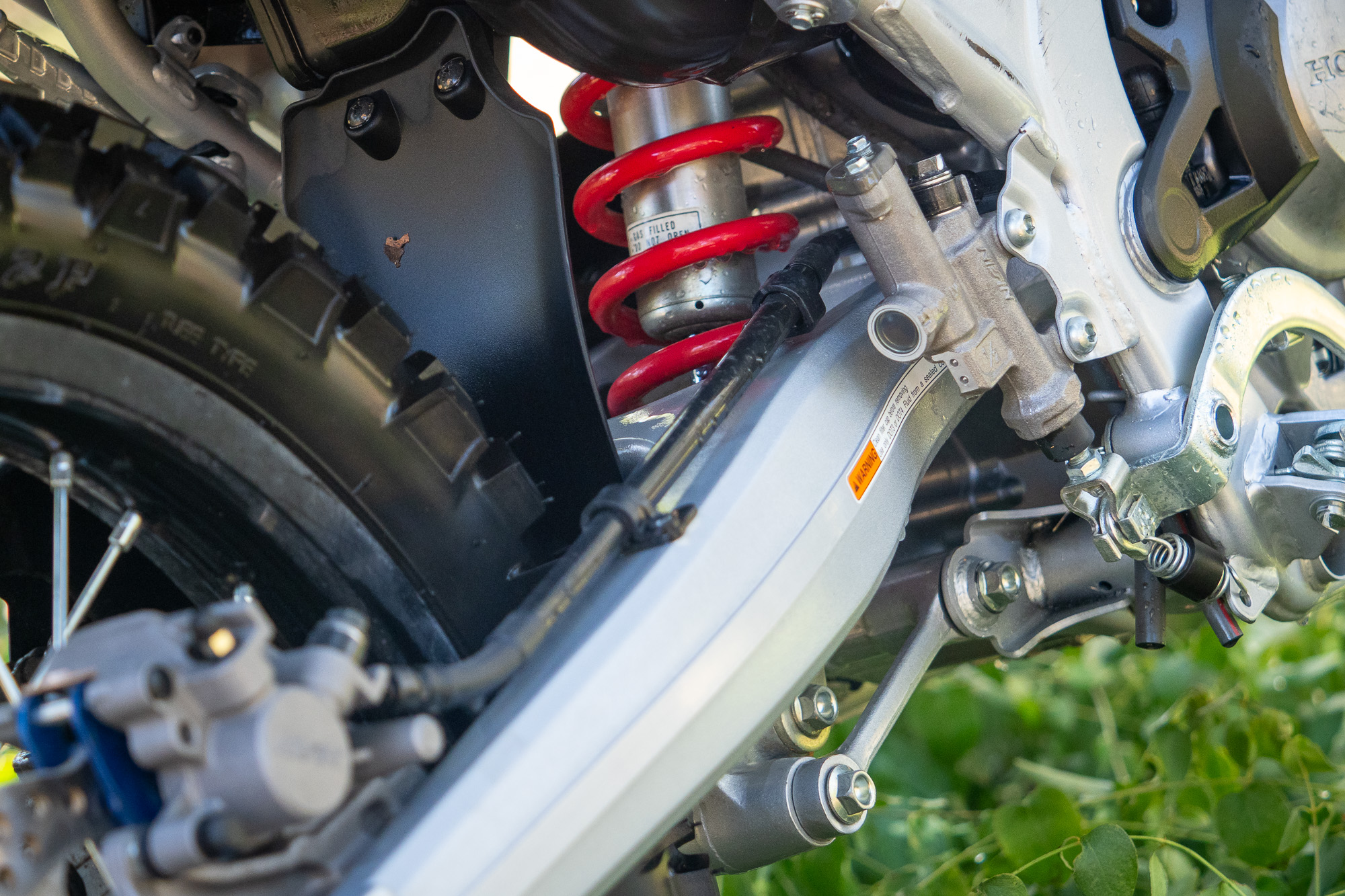
As is always the case with stock dual sport tires, upgrading to DOT-approved aggressive knobbies would improve everything while riding the Honda CRF300L off-road.
The Final Word on the 2024 Honda CRF300L

The 2024 Honda CRF300L’s riding characteristics, combined with its $5,449 price tag, make it a great option for those looking for daily practicality mixed with some off-road fun — especially those new to motorcycling. The legendary Honda reliability is a welcome bonus.
Although the bike won’t wow experienced riders, it would still be an excellent, economical daily urban commuter.
Like many Honda vehicles I’ve tested, my overall take-home feeling was, “It’s a typical Honda.” To me, this means it did everything well, with no gaping shortcomings but also no standout abilities. But it will do this, without a whimper, day after day, year after year.
Ultimately, the 2024 Honda CRF300L is a dual-sport bike for the masses. And those masses will have nothing to complain about and little to worry about.
